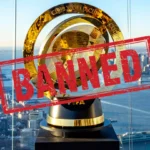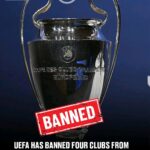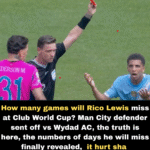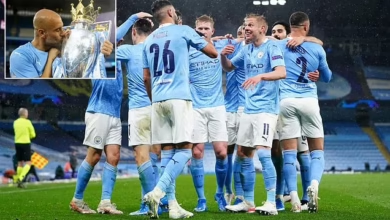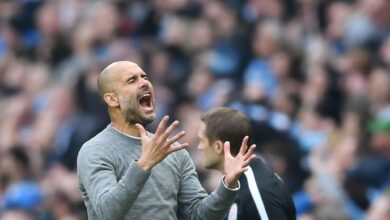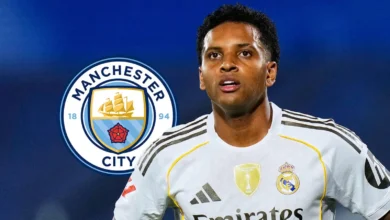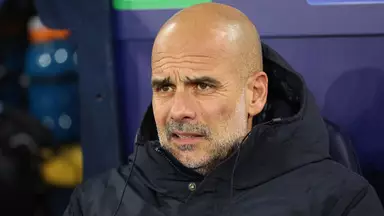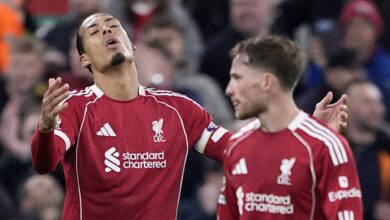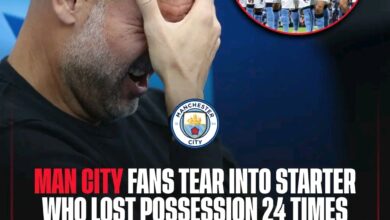Ryan Gravenberch Liverpool Suspension: The Crystal Palace Red Card Loophole Explained
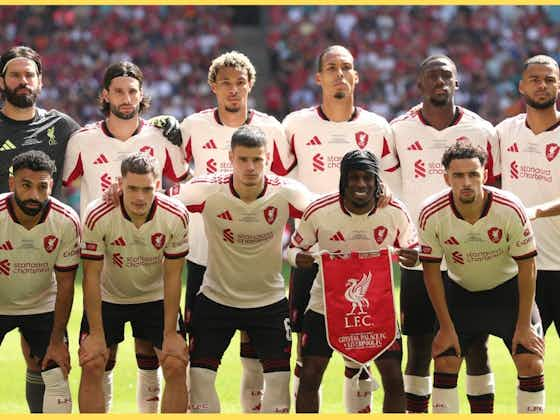
The world of otball is often filled with intricate rules and regulations that can perplex even the most dedicated supporters. One such scenario has recently emerged surrounding Liverpool midfielder Ryan Gravenberch and his availability for the Community Shield fixture against Crystal Palace. Despite receiving a straight red card in the final Premier League match of last season against the very same opponents, a fascinating loophole in suspension regulations means the Dutch midfielder remains eligible to feature in this prestigious curtain-raiser to the new campaign.
This situation perfectly illustrates the complex nature of football’s disciplinary system and how different competitions operate under distinct regulatory frameworks. The case of Gravenberch’s red card and subsequent suspension has sparked considerable discussion among football enthusiasts, pundits, and legal experts within the sport, highlighting the nuanced differences between various competitive formats and their respective punishment structures.
The controversy began during Liverpool’s final Premier League fixture of the previous season, a match that would prove crucial not only for the Reds’ title aspirations but also for understanding the intricacies of football’s suspension system. Playing at Anfield against Crystal Palace, Liverpool found themselves in an unexpectedly challenging position, trailing 1-0 in a match where every point mattered in their pursuit of Premier League glory.
It was during this high-pressure encounter that Ryan Gravenberch, the 23-year-old Dutch midfielder who had become an integral part of Liverpool’s midfield setup, found himself involved in a moment that would have lasting consequences. The incident occurred when Crystal Palace’s Daichi Kamada found himself in a promising attacking position, with the potential to extend Palace’s lead and further damage Liverpool’s title hopes.
Gravenberch, recognizing the danger posed by Kamada’s advance, made a split-second decision that would ultimately define the match’s narrative. In an attempt to prevent what appeared to be a clear goalscoring opportunity, the Liverpool midfielder brought down the Palace player in a manner that left the referee with little choice but to reach for his red card. The decision was immediate and uncompromising – Gravenberch was shown a straight red for denying a clear goalscoring opportunity, a decision that fell under the category of serious foul play according to the Laws of the Game.
The timing of this incident could hardly have been worse for Liverpool, coming as it did in the final match of what had been an intensely competitive Premier League campaign. With the Reds already trailing and now reduced to ten men, the situation appeared dire. However, football has a way of providing dramatic twists, and this match would prove no exception to that rule.
Despite the setback of Gravenberch’s dismissal, Liverpool demonstrated the resilience and character that had defined their season. The team, now playing with ten men and trailing by a goal, refused to accept defeat in what could have been a decisive moment in their title challenge. The Anfield crowd, renowned for their ability to inspire the team during crucial moments, played their part in maintaining the atmosphere and belief that a comeback was possible.
As the match progressed into its later stages, Liverpool continued to press forward despite their numerical disadvantage. Their persistence was eventually rewarded when Mohamed Salah, the Egyptian forward who had been such a crucial figure throughout the campaign, found the equalizer that ensured the points would be shared. The goal not only salvaged a vital point for Liverpool but also retrospectively justified Gravenberch’s decision to commit the foul that led to his dismissal.
This dramatic turnaround transformed what could have been a devastating defeat into a valuable point, demonstrating how a single moment of tactical fouling, despite resulting in a red card, can sometimes serve the greater strategic purpose. Gravenberch’s sacrifice, while resulting in his early departure from the pitch, ultimately contributed to Liverpool’s ability to secure a result that kept their title hopes alive.
The aftermath of this match left Liverpool with mixed emotions – relief at having secured a point, satisfaction with the team’s resilience in the face of adversity, but also concern about Gravenberch’s availability for upcoming fixtures. Little did anyone know at the time that this red card would become the subject of significant discussion regarding suspension regulations and competition-specific rules.
To fully comprehend the situation surrounding Gravenberch’s availability for the Community Shield, it’s essential to understand the complex framework that governs suspensions in English football. The system operates on multiple levels, with different competitions maintaining their own specific rules and regulations regarding disciplinary matters.
The Premier League, as England’s top domestic competition, operates under its own set of disciplinary guidelines that are administered in conjunction with the Football Association. When a player receives a red card in a Premier League fixture, the resulting suspension typically applies specifically to Premier League matches, unless the offense is deemed sufficiently serious to warrant broader punishment across multiple competitions.
The severity of the offense plays a crucial role in determining the scope of any resulting suspension. Standard red card offenses, such as the one committed by Gravenberch for denying a clear goalscoring opportunity, typically result in competition-specific suspensions. However, more serious offenses, including violent conduct, serious foul play with intent to injure, or misconduct toward officials, can result in suspensions that extend across all domestic competitions under the FA’s jurisdiction.
This distinction is crucial in understanding why Gravenberch remains available for the Community Shield despite his Premier League suspension. The red card he received falls into the category of tactical fouling to deny a goalscoring opportunity, which, while serious enough to warrant immediate dismissal, is not considered grave enough to trigger a cross-competition suspension.
The Community Shield occupies a unique position within English football’s competitive landscape. Traditionally held at Wembley Stadium, this fixture serves as the curtain-raiser to the new football season and pits the Premier League champions against the FA Cup winners. While it is classified as a competitive fixture, it operates under different regulatory frameworks than standard league competition.
From a disciplinary perspective, the Community Shield is treated as a separate entity from the Premier League, despite being a domestic competition under the FA’s umbrella. This separation means that suspensions incurred in Premier League fixtures do not automatically transfer to the Community Shield, unless specifically mandated by the FA for particularly serious offenses.
This regulatory distinction has created what many observers describe as a “loophole” in the suspension system. Players who might be suspended for league fixtures can potentially feature in the Community Shield, provided their offenses don’t meet the threshold for cross-competition punishment. This situation has precedent in English football, with several high-profile cases over the years where players have been available for the Community Shield despite carrying suspensions from the previous season’s Premier League campaign.
The decision regarding whether to extend Gravenberch’s suspension to include the Community Shield ultimately rested with the FA’s disciplinary committee. After reviewing the incident, they determined that the offense, while worthy of a Premier League suspension, did not meet the criteria for broader punishment across all domestic competitions
The availability of Ryan Gravenberch for the Community Shield provides Liverpool manager Arne Slot with additional tactical flexibility as he prepares his team for their first competitive fixture of the new season. Gravenberch’s presence in the squad represents a significant boost, given his importance to Liverpool’s midfield structure and his ability to contribute both defensively and in the attacking phases of play.
During the previous season, Gravenberch had established himself as a key component of Liverpool’s midfield setup, bringing a combination of physicality, technical ability, and tactical intelligence that made him invaluable to the team’s overall balance. His ability to break up opposition attacks, distribute the ball effectively, and contribute to Liverpool’s pressing game made him one of the most consistent performers in Jurgen Klopp’s squad.
For Arne Slot, who has taken over the managerial reins at Anfield, having Gravenberch available for such an important fixture allows him to field what he might consider his strongest possible midfield combination. The Dutch connection between Slot and Gravenberch could prove particularly beneficial, with the manager’s intimate knowledge of Dutch football potentially helping him maximize the midfielder’s contributions to the team.
The psychological impact of having Gravenberch available should not be underestimated either. For a player who ended the previous season under the cloud of a red card dismissal, the opportunity to immediately return to competitive action provides a chance for redemption and the possibility of creating more positive memories from encounters with Crystal Palace.
The fact that Liverpool’s Community Shield opponents are Crystal Palace adds an intriguing subplot to Gravenberch’s availability. Facing the same team against whom he received his red card creates a narrative thread that extends beyond simple suspension regulations into the realm of sporting drama and personal redemption.
From a tactical perspective, Crystal Palace will be well aware of Gravenberch’s capabilities and the threat he poses in Liverpool’s midfield. The Eagles’ coaching staff will have extensive video analysis of his playing style, strengths, and potential weaknesses, having faced him multiple times during the previous campaign. This familiarity could work in Palace’s favor as they attempt to neutralize his influence on the game.
However, the same familiarity works both ways. Gravenberch will have clear memories of his previous encounters with Palace players and will understand their tactical approaches and individual characteristics. This knowledge could prove valuable in helping him avoid similar situations to the one that led to his red card while maintaining his aggressive, combative style that makes him so effective.
The psychological dynamic between Gravenberch and the Palace players, particularly Daichi Kamada if he features, will be fascinating to observe. The Japanese midfielder, who was the victim of the tackle that led to the red card, may expect Gravenberch to approach similar situations with more caution, potentially creating tactical opportunities for Palace to exploit.
While Gravenberch’s availability for the Community Shield provides immediate relief for Liverpool, the reality of his Premier League suspension looms large over the early weeks of the new season. The one-match ban that he must serve will come into effect when Liverpool begins their Premier League campaign, creating a selection dilemma for Arne Slot.
Liverpool’s Premier League season is scheduled to commence on Friday, August 15, with a home fixture against AFC Bournemouth at Anfield. This match, while against supposedly less formidable opposition than some of Liverpool’s other early-season encounters, represents an important opportunity to start the campaign with three points and positive momentum.
The absence of Gravenberch for this opening fixture will require Slot to adjust his tactical approach and possibly alter his preferred midfield configuration. This situation provides an opportunity for other midfield players in the Liverpool squad to stake their claim for regular starting positions, while also testing the squad’s depth and versatility.
The timing of this suspension is particularly significant given that it coincides with the beginning of a new managerial era at Liverpool. Slot, inheriting a squad that achieved considerable success under his predecessor, will be eager to implement his tactical philosophy from the earliest possible moment. Having to do so without one of his key midfield players presents an additional challenge in what is already a period of transition and adaptation.
Gravenberch’s suspension situation highlights the broader challenges that modern football managers face in squad management and player rotation. The compressed nature of the contemporary football calendar, with multiple competitions running concurrently and overlapping, means that player availability can fluctuate rapidly due to suspensions, injuries, and international commitments.
For Liverpool, managing player availability across different competitions will be crucial to their success in the upcoming season. The club will be competing in the Premier League, various domestic cup competitions, and potentially European tournaments, each with their own scheduling demands and regulatory requirements.
The fact that Gravenberch can feature in the Community Shield but not in the opening Premier League fixture demonstrates how these regulatory differences can create both opportunities and challenges for squad management. While his availability for the Community Shield is welcome, the subsequent unavailability for the league opener requires careful planning and tactical adjustment.
This situation also underscores the importance of squad depth and versatility in modern football. Teams that can successfully navigate the complexities of player availability across multiple competitions are often those that achieve the greatest success over the course of a seaso
The Gravenberch situation is not unprecedented in English football, with several similar cases occurring over the years where players have been available for certain competitions despite carrying suspensions in others. These instances have consistently highlighted the sometimes confusing nature of football’s disciplinary system and the need for clearer, more consistent regulations across different competitions.
Previous cases have involved high-profile players missing crucial league fixtures while being available for cup competitions or vice versa. Each instance has sparked debate about the fairness and consistency of the current system, with calls for reform and standardization of suspension regulations across all domestic competitions.
The current situation may contribute to ongoing discussions about potential changes to the disciplinary framework. Some argue that all suspensions should apply across all domestic competitions to ensure consistency and fairness. Others maintain that the current system allows for appropriate flexibility and recognition of the different nature of various competitions.
For the immediate future, Liverpool and other clubs will continue to work within the existing framework while advocating for any changes they believe would improve the system’s fairness and clarity. The Gravenberch case serves as a perfect example of why these discussions remain relevant and necessary
The case of Ryan Gravenberch’s availability for Liverpool’s Community Shield fixture against Crystal Palace perfectly encapsulates the complexities and nuances of modern football’s regulatory landscape. What began as a moment of tactical fouling in a crucial Premier League match has evolved into a fascinating study of how different competitions operate under distinct disciplinary frameworks.
Gravenberch’s red card against Crystal Palace in the final match of the previous season created a suspension that applies specifically to Premier League fixtures, leaving him available for the Community Shield due to the separate regulatory treatment of this prestigious curtain-raiser. This “loophole” in the system provides Liverpool with a tactical advantage while highlighting the sometimes confusing nature of football’s disciplinary procedures.
For Arne Slot and Liverpool, the availability of such an important player for their first competitive fixture of the new season represents a significant boost. Gravenberch’s presence in the squad provides tactical flexibility and the opportunity for the player himself to create more positive memories in encounters with Crystal Palace.
However, the reality of his Premier League suspension means that Liverpool will need to plan carefully for their opening league fixture against AFC Bournemouth. This situation perfectly illustrates the challenges of modern squad management and the importance of maintaining adequate depth across all positions.
As the new season approaches, the Gravenberch situation serves as a reminder of the intricate rules that govern professional football and how understanding these regulations can provide competitive advantages. Whether the current system represents the best approach to handling suspensions across multiple competitions remains a subject of ongoing debate, but for now, Liverpool can be grateful for the regulatory distinction that allows their Dutch midfielder to feature in what promises to be an engaging Community Shield encounter.
The broader implications of this case extend beyond a single player’s availability for one match. It highlights the need for continued discussion about the consistency and fairness of disciplinary procedures across different competitions, while also demonstrating how tactical decisions made in the heat of competitive action can have far-reaching consequences that extend well beyond the original incident.
As Gravenberch prepares to face Crystal Palace once again, this time at Wembley Stadium in the Community Shield, the narrative comes full circle. From a red card dismissal that threatened to sour Liverpool’s title celebrations to availability for a prestigious season opener, the Dutch midfielder’s journey illustrates the complex, often unpredictable nature of professional football and the regulatory frameworks that govern it.


